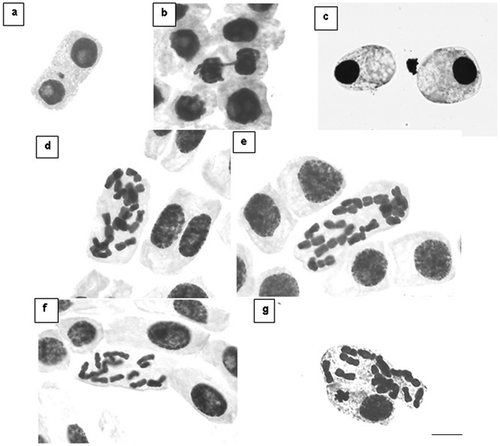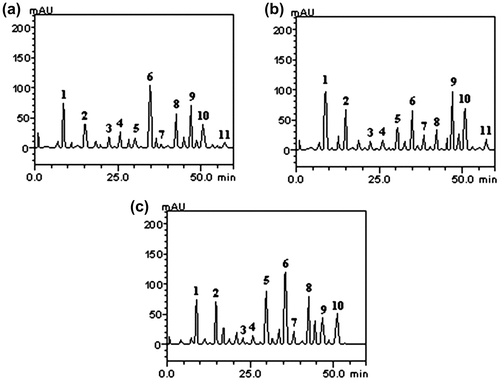Figures & data
Table 1. Number of meristematic cells of Allium cepa roots analysed at interphase and other stages of the cell cycle, including irregularities, as well as the mitotic indices (MI) for each treatment.
Figure 1. Irregularities found in the cells of Allium cepa under the treatments with Psidium cattleianum juices. (a) Cell with micronucleus treated with yellow strawberry guava juice 125 g l−1 (Distrito de Palma) – T3. (b) Cell with bridges in telophase treated with red strawberry guava juice 125 g l−1 (Universidade Federal de Santa Maria) – T4. (c) Cells in apoptosis treated with the positive control – T5. Cells with irregular metaphases: (d, e) Treatment with yellow strawberry guava juice 125 g l−1 (Distrito de Arroio Grande) – T2; (f) treatment T3; (g) treatment T4. Scale: 10 μm.

Table 2. Number and type of chromosomal irregularities found in Allium cepa root tips submitted to the distinct treatments and mean cell with alterations.
Figure 2. Chromatographic profile of Psidium cattleianum juices: (a) Distrito de Arroio Grande (DAG); (b) Distrito de Palma (DP); (c) Universidade Federal de Santa Maria (UFSM); UV detection at 327 nm. Gallic acid (peak 1), catechin (peak 2), chlorogenic acid (peak 3), caffeic acid (peak 4), ellagic acid (peak 5), epicatechin (peak 6), rutin (peak 7), quercitrin (peak 8), isoquercitrin (peak 9), quercetin (peak 10), and kaempferol (peak 11).

